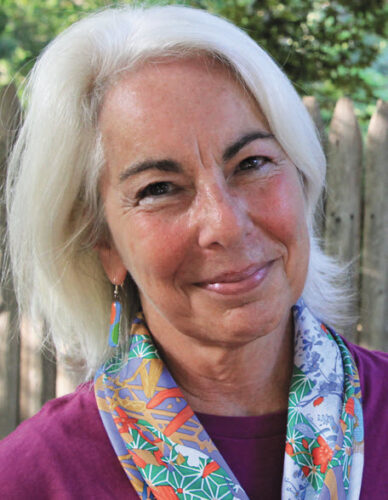This Toil & Trouble column was first published in the September, 2024 issue of EMAg, The Magazine of Early Music America
I recently participated in an audiophile listening session focused on early 20th-century singers. I have always admired the clarity of tone and minimal vibrato of such artists as Enrico Caruso, Rosa Ponselle, Miguel Fleta, André d’Arkor, and Giovanni Martinelli, but this time I was particularly struck by the ease and generosity of their performances. Unlike so much of what I hear nowadays, no one was bellowing or forcing the tone to indicate #operaticdrama. Instead, the voices sounded rich and dense, with luxurious phrasing and genuine emotional impact.
Dutch tenor Jacques Urlus (1867-1935) sang Wagner’s heroes with cultivated sound (as well as generous portamento) and chamber music elegance. What dramatic tenor today is not shouting most of the time? Antonio Cortis (1891–1952) used a sweet sound with amazing dynamic control in a slow and meditative “Nessun dorma” from Puccini’s Turandot. The Spanish tenor sounds like a Lieder singer, using diminuendos and delicacy to highlight Calaf’s tenderness as he prepares for verbal battle with the icy princess, rather than evoking a physical matchup on a soccer field.
Cortis’ singing of the high-intensity verismo roles was praised as “exciting,” yet he was using completely different methods than opera singers today. I began thinking about how we generate excitement in our playing and singing, and how we might take a historical approach even to this. Do we need breakneck tempos, edgy string playing, machine-gun coloratura, and stridency to make our points?
What made music exciting and interesting for listeners in the early 17th century, when vocal and instrumental music was exploring declamation, rhetorical delivery, theatricality, and the ability to move the listener?
Giovanni Bardi wrote that “Opera is capable of expressing every variety of emotion and passion that the human heart can feel.” Marin Mersenne broadened the scope to claim that music itself “has the power to move and touch the soul with a force that surpasses that of any other human activity.” Antiphonal and polychoral music by Giovanni and Andrea Gabrieli exploited the grand spaces of St. Mark’s and other Venetian venues to surround and astound the awestruck listener. Sigismondo d’India and other composers of monody explored the impact of declamatory musical poetry in intimate spaces. At the court of Louis XIV, lavish and expensive music, dance, costumes, scenery, and special effects amazed opera spectators.
Old recordings reveal changes in taste regarding tempo, rubato, ornamentation, ensemble, and dynamics, but also a basic aesthetic change in vocal timbre and string tone. Baritones often sounded tenor-like rather than woofy, and women used chest voice more consistently than contemporary singers. In 1937, Sergei Lemeshev sings Lensky’s highly emotional aria from Tchaikovsky’s Eugene Onegin with pathos and immediacy, eschewing any sobbing or pedal-to-the-metal excess. The unhurried tempo brings more focus to the tenor’s phrasing and vocal colors, as well as the character’s conflicted interior life. Similarly, Titta Ruffo doesn’t need a frantic tempo to score points in his 1912 recording of the Prologue to Leoncavallo’s Pagliacci.
On a side note, many early recordings of vocal music show that appoggiaturas were commonly applied, before the mid-century takeover of rigidity and incorrect “correctness.” Listen to recordings of Lilli Lehmann (1907), Johanna Gadsky (1910), and Gabrielle Ritter-Ciampi (1924) singing Mozart with proper appoggiaturas, which have only recently been allowed back into Mozart performance.

In addition to the ease of vocal production and generosity of expression, there’s a different conception of what constitutes togetherness in ensembles. It’s a more fluid and forgiving approach, and a sense that performers are listening to each other rather than watching a metronome or a baton. In contrast with Wilhelm Furtwängler’s emphasis on spiritual
and psychological depth, Arturo Toscanini’s insistence on discipline and precision took
away a lot of the personalized expression that players and singers were used to.
When rubato, portamento, and misalignment of ensembles fell out of favor, performers had to captivate the listener with other effects. Volume, speed, accuracy, and vibrato took over as expressive devices, and were better suited to metal strings and more fortified instrumental construction, larger and drier concert venues, and audience expectations brought on by the recording industry itself. Recordings of violinist Jascha Heifetz from the 1920s reveal a solid 19th-century aesthetic, while in later examples his playing is faster, cleaner, and more sonically brilliant, to generate excitement.
Raising the pitch of concert A, using metal-wound strings, unleashing wider and continuous vibrato, and treating every performance as a life-or-death event have contributed to a superficial sense of drama. What about really mastering our technique so that tempo, dynamics, and phrasing are totally in control? Then we can explore contrasts for effect. What about infusing our playing and singing with rhythmic vitality? Dance forms, recitative, moto perpetuo, or free rhapsodic toccata styles need different approaches. Can we revel in the harmonic language, with its modulations and dissonances? Can we enjoy counterpoint and imitative writing?
Opportunities for display and improvisation are built into Baroque music. How do we meet them? What about developing a truly personal stage presence that balances intimacy or mystery with overt power, based on expression, delivery, body language, and eye contact, both with the audience and with our colleagues on stage? Can we be expressive and exciting without shouting and scraping?
Mezzo-soprano Judith Malafronte teaches in the Historical Performance department of Indiana University’s Jacobs School of Music and writes for arts publications nationwide.

